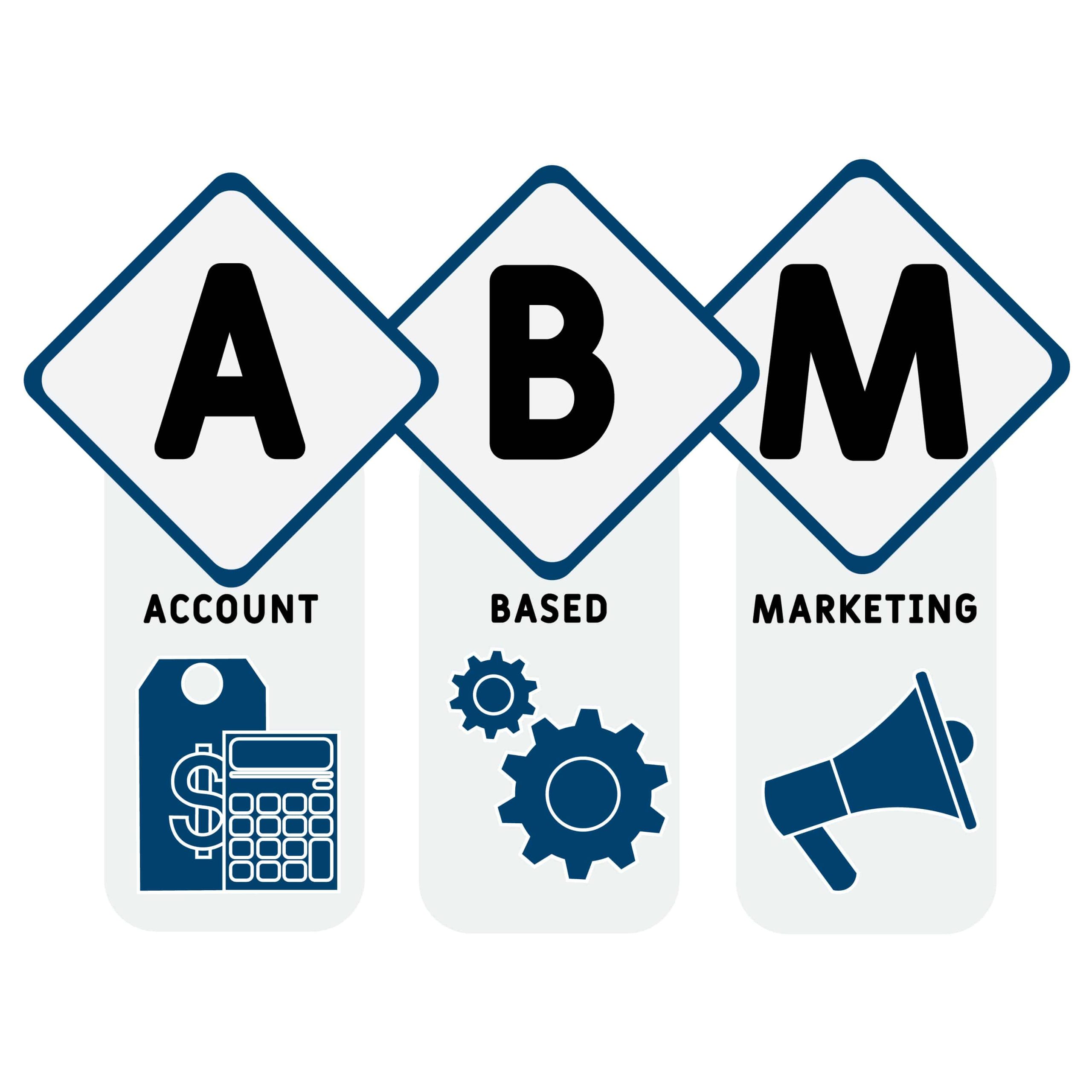You can’t very well build a skyscraper that will stand the test of time without constructing a solid frame or following a predetermined blueprint. The same is true of your Account Based Marketing (ABM) strategy. To build a long-lasting, viable, and productive ABM marketing system, you need to have a solid framework to follow and use as you implement ABM.
In fact, without a solid framework, you’re likely to struggle to see the impressive results that are so ubiquitous with properly deployed ABM systems. You see, ABM itself is a strategy, not a specific plan. It’s like buying a sailboat to sail to Bermuda. The boat is the strategy to get to the island, but without a compass, map, and the knowledge necessary to sail the boat? You could end up lost, sunk, or never leaving the dock. So if you know you want your company to embrace ABM as a means to land better, bigger clients, in addition to the ABM strategy itself, you need an ABM framework and plan to help you meet your goals.
Luckily, ABM has been around long enough that there’s a framework that tends to check all the boxes when it comes to helping businesses grow their marketing success. While your company may tweak the framework slightly to meet your needs, as a general rule, the Account Based Marketing framework consists of the following pillars to success.
Get buy-in from the sales and marketing teams
One of the biggest benefits of ABM (and also one of the biggest challenges) is that it requires a team effort between sales and marketing. Unlike traditional marketing strategies, that function independently from the sales team, ABM requires that marketing and sales work toward targeting and selling to the same specific accounts. So while it’s all well and good for the marketing department to say “We’re going to implement ABM,” if the sales team isn’t aware or on board, you’re unlikely to be able to track or experience the results you’re hoping for.
In this way, much of the initial work toward developing ABM is front-end heavy. You have to engage the sales team, sell the concept of ABM, receive their buy-in and commitment, and deploy the strategy together. The good news is when sales and marketing are committed and aligned together, marketing-generated revenue increases by 208%, while customer retention also goes up by about 36%. In other words, this is a critical step in starting an ABM strategy.
Set goals and create the ideal customer profile (ICP)
A plan without goals to execute isn’t going to take you very far. Before you start deploying your ABM strategy, slow down, identify your goals and clearly define who it is that you’ll be targeting. This can take some effort, and again, a collaboration between sales and marketing. For starters, you need to decide what type of customer growth you’re looking to build — is it most important to land new clients, expand business with your current clients, or work on customer retention and satisfaction? Likely, it’s a combination of the three, but when it comes to allocating resources and setting revenue and outcome goals, it’s important to have a strong gauge on where you’ll be putting most of your energy and effort (or time and talent, as it were).
And assuming a large chunk of your time will be invested in marketing to new potential customers, you’ll need to develop your ideal customer profile. This ICP is a tool you’ll use to help identify the best potential customers for your business. It involves looking at your organization’s products, services, and strengths, and deciding exactly what makes your business stand out from the competition.
By closely identifying your own company’s strengths, you can then decide what specific traits or needs your ideal customer should have — their size, industry, location, services, and their customer profile. This is a way to help line up the problems your company is designed to solve with the type of customers who need those problems solved.
Research potential clients and agree on the targets
Once you’ve created your ICP, you can cross-reference the ICP with real potential customers to help you identify the accounts your company should be targeting with personalized marketing and sales messages. Using internal and external data on your targeted markets, you’re likely to end up with a decent-sized “short list” of potential customers, but because of Account Based Marketing’s personalized approach, it’s unlikely you’ll be able to target every potential customer the first time around. With your short-list in hand, you’ll need to team up with the sales team to narrow the focus to the target customers with the best possible opportunity to connect, convert, retain, and maintain long-term. In other words, you need to segment your list into “high priority,” “medium priority,” and “lower priority” accounts to determine which ones to target first. When you’ve agreed on which potential customers to target, you’re almost … almost … ready to put your creative marketing skills to work.
Identify decision makers and where they “live”
Before you do actually start crafting your marketing messages, there’s one more step in the pre-messaging ABM framework: You have to work with sales to identify your target client’s decision-makers. You see, in large operations, there are typically at least seven people involved in making purchasing decisions. So putting your marketing message in front of a single decision-maker likely won’t do you much good. You need to get your message in front of as many of the relevant decision makers as you can, which means you need to know who they are, and where they tend to engage with marketing messages, whether that’s through email, social media, events, or other channels.
Personalize the marketing message
Once you know what target client you’re crafting your messages for, and even more specifically, which members of the buyer’s panel you’ll be targeting, you’re ready to start personalizing your marketing message. So, rather than putting together a single marketing campaign designed to highlight the parts of your company that you think people should know more about, you’re putting together multiple, specific marketing messages designed to tell your potential clients how your company can specifically solve their problems or needs. And, you’re putting the messages together in the formats designed to get in front of the buyers’ eyes. This type of marketing is more time intensive, but it ultimately provides the type of call to action that buyers (and your potential clients) are more primed and ready to respond to.
Contact decision makers directly
At the same time as the marketing team is crafting and delivering personalized marketing messages to potential clients, the sales team is hard at work, too. While their role is different, the goal is the same — convert potential clients into sales and revenue. So after the ABM campaigns have been deployed, the sales team is responsible for reaching out to the members of the buyer’s panel to … well, sell. But hopefully, rather than reaching out to semi-cold leads, the ABM messaging has done its job and the buyer’s panel is ready to ask more questions and the sales team is ready to take the potential client and make it a real client.
Keep track of metrics and see if you’ve reached your goals
The goal-setting you did early on in the ABM framework process, as well as the ease with which it’s possible to track an ABM campaign, you should have plenty of metrics to turn to as your campaign wraps up. This is another area where third-party marketing companies like Full Circle Insights can help you assess your campaign’s success. By identifying and tracking key components like contacts, views, click-throughs, engagements, and sales, you can see what went right and what went “not as well” at every step of the process. This gives you the information you need to tweak your system and continue improving outcomes in the long run.
While following an intensive ABM framework may seem like a lot of work, with more energy and effort placed on planning than you may be used to, the typical results speak for themselves. And while switching to ABM does require buy-in and effort, with the help of Full Circle Insights’ ABM software that integrates with Salesforce, the transition may be easier than you think.
Ben Farman, Marketing Manager, Full Circle Insights




